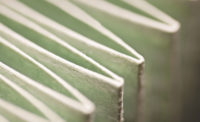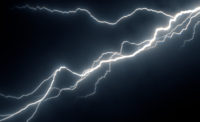There are three types of hazards in the manufacturing process: physical, chemical and biological. This article focuses on glass – one the most common physical hazards in manufacturing – and explores best practices to help minimize glass contamination caused from lighting products.
Safety mandates
A physical hazard is any extraneous object or foreign matter which may cause illness or injury to a person consuming the product. Entities such as OSHA and the FDA have strict mandates requiring facilities to provide protective coverings for exposed glass within food processing areas. FDA code 110.20 Section B, Part 5 mandates that a facility must “provide safety-type light bulbs, fixtures, skylight or other glass suspended over exposed food in any step of preparation or otherwise protect against contamination in case of glass breakage.”
Prevention of glass contamination is one reason regulations emphasize the importance of shielding lights. Broken glass can compromise the integrity of the organization and result in thousands of dollars in clean-up, unsalable product and loss of revenue.
Unfortunately, proper precautionary protection is not always executed, or substandard protective mechanisms are installed and fail. If a lamp is accidentally broken, the effects of glass shards polluting products, machinery, employee workstations or packaging and food storage areas can be detrimental. The challenge of detection is amplified for frozen food processors, as glass shards can easily be mistaken for ice crystals in products. Regardless of whether the products are frozen or hot, dry or liquid, the consequences of exposed glass can be costly and dangerous.
Best practices
The following best practices help mitigate the risk of glass contamination from lighting products:
• Choose a shatter-resistant lighting product that has a safety coating applied directly to the bulb to make it shatter-resistant.
• Consider lighting products that use an extrusion method to apply coating. This method ensures that virtually all glass is safely contained within the clear coating if it is accidently broken.
• Select a lighting product that uses a protective coating that will not degrade over time. Some substandard coatings degrade from UV emissions from the lighting. UV emissions can cause the coating to yellow, crack and flake off and eventually leave the bulb unprotected.
• Leverage lighting products with UV blocking to prevent ultraviolet rays from escaping fluorescent lamps.
• OSHA has issued a fire warning against the use of tube guards because the plastic caps can cause electrical problems.
• Ensure your lighting products are backed by strong performance warranties that stand behind their safety coating for the rated life of the product.




